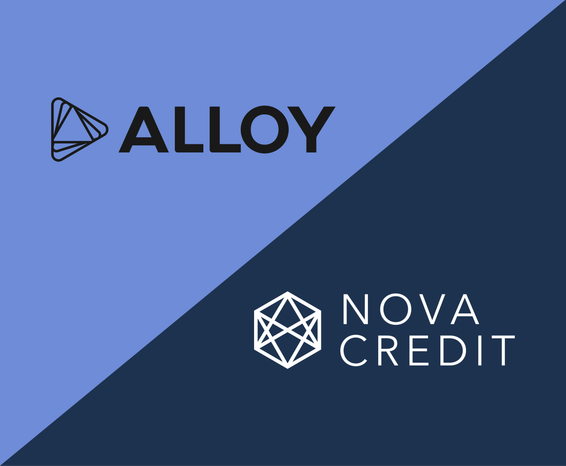Share
Why does it seem like everyone is launching a credit card?
Oct 12, 2022

The consumer credit card market has seen a lot of growth over recent years. It is the largest consumer lending market in the US based on the number of users and is central to the financial lives of about 180 million Americans. A space that larger traditional financial institutions historically dominated is now seeing innovation and disruption from neobanks, fintech companies, and even companies outside of financial services altogether.
Previously, only traditional banks or very large companies like hotels, supermarkets, and airlines offered card programs. More recently, tech giants like Apple and Amazon introduced credit cards to open up additional revenue streams and drive customer loyalty. But the trend doesn’t stop with big tech companies, brands like Nike and West Elm offer credit cards too. I mean, even American Kennel Club offers a credit card!
Customers are increasingly calling for and need more accessible and personalized product offerings. As a result, new companies are popping up to service these consumers using a verticalized banking approach.
Fintech companies like Aspiration and Step take two different approaches to serving niche populations with verticalized product offerings and rewards. For Aspiration, this is very values-based, aligning with their customers on fighting climate change. For Step, this is needs-based, offering the traditionally underbanked younger demographic a financial platform to begin building their wealth. Other companies such as BlockFi and Gemini have announced plans to offer credit card rewards redeemable for virtual currencies to further cater to their enthusiastic customer base.
Three key trends shaping the consumer credit card space
There are three key areas that have been shaping the consumer credit card space:
1. Shifting consumer behaviors (clear consumer need/demand)
As with most industries, when consumer behaviors change, businesses will race to be the first or best company to answer new consumer needs. Let's break down some of the consumer behavior trends at the forefront:
Consumers need credit right now. Credit card balances rose 13% in Q2 2022, the largest year-over-year increase in 20 years. Necessity is certainly a driving factor in this growth. Many consumers faced economic hardships accelerated by the COVID-19 pandemic and an inflation rate that is outpacing wage growth. To bridge these gaps, consumers are overwhelmingly turning to credit cards. Alternative data and underwriting methods are allowing more people to access credit than ever before, with some providers offering new types of secured credit cards to consumers lacking credit scores or credit files.
Consumers want completely digital experiences. How many of you still use cash to pay for things on a regular basis? How many of you have been to a physical bank branch location in the past 6 months? Probably not very many. When you consider that 88% of general-purpose card applications were submitted digitally in 2020 and virtual transaction volumes are expected to grow at a 26% CAGR over the next five years, it is clear consumers are increasingly drawn toward digital experiences and cashless (and now with mobile wallets, even cardless) payment methods.
Consumers want a personalized customer experience. 66% of consumers expect their financial institution to understand their unique needs and expectations. Many financial services providers are meeting this trend both through a needs-based and values-based approach.
New communities are demanding access to digital credit products. Gen Z is a generation of influencers and side hustlers, however many of them have not established credit yet. Despite that, they have a staggering $360 billion in disposable income. Gen Zers aren’t the only ones driving the need for more digital credit products, as a whole generation of boomers is coming online for the first time with their own unique set of financial needs. On top of that, financial services providers are finally paying attention to the demand coming from traditionally unbanked and underbanked folks — such as people with lower incomes, immigrants, and people from marginalized communities — by using alternative data to onboard and underwrite them.
2. The power of customer loyalty (strong business case)
Brands and fintech companies that launch credit cards not only create new revenue streams but, perhaps more importantly, build deeper customer relationships. According to a Forerunner survey, 75% of consumers belong to a loyalty program (48% belong to 3+ programs), and 61% are more likely to spend where they are a program member.
In highly competitive consumer markets, it is extremely hard to drive differentiation and scalable customer acquisition, which is why customer stickiness is critical. Most of the biggest consumer brands understand this: Amazon, Nike, and Starbucks aren’t just trying to acquire new customers, they’re trying to get the most lifetime value out of their current customers – it’s no coincidence all three of those brands offer credit cards.
3. Launching credit products is easier than ever before (lower barrier to entry)
Previously, credit card programs offered by nonbanks were limited to very large companies and took years to build. However, next-gen financial infrastructure solutions have finally caught up with market demand and are powering a new paradigm, dramatically decreasing the barrier to entry of launching new financial products. Now, companies can launch new credit products in as little as 90 days. Third-party providers take the most complicated parts of building financial products and make them simple.
Here are some categories of infrastructure providers that are changing the game for building consumer credit card products:
Online account opening platforms: powers an omnichannel interface to get new customers onboarded - quickly and seamlessly.
Modern card issuing: provides increased innovation and accessibility through self-service experiences, flexible open APIs, and digital/virtual card capabilities compared to the high-touch experiences, purpose-built APIs, and limited digital access of legacy issuers
Identity Decisioning Platforms: Uses traditional data and alternative data to automate identity and risk decisions across the lifecycle of your customer, from onboarding and underwriting to monitoring ongoing financial activity for money laundering and fraud.
Open Banking Platforms: make it easy for FIs to securely share data with third-party businesses through an API that allows their customers to connect their banking data.
BaaS Platforms: enable a non-bank to integrate digital banking or payment services directly into their products by connecting it with a partner bank.
Check out our eBook to learn more about how to vet a fintech solution to add to your tech stack
Deciding whether or not to get involved?
The consumer credit card market is enjoying a renaissance. We’re reaching a perfect storm where new technologies are enabling nonbanks and fintech companies to offer the fully digital, accessible, and personalized credit products that consumers crave. And a rapidly changing macro environment where the high cost of capital and customer acquisition is increasing the need for businesses to focus on customer lifetime value and capital-efficient growth.
Have you and your company’s leaders considered how launching a credit card offering could fit into your strategic plan? Many of our customers' leaders, including Gemini and Aspiration, have successfully and quickly launched credit cards.
Alloy is empowering companies to launch card programs quickly and at a fraction of the cost.
Alloy is playing a critical role in making it easy for any company to enjoy the many benefits of a card program. Alloy's unified API and no-code decisioning platform allows you to combine fraud, compliance, and credit underwriting decisioning into one platform. We enable 1-2 person teams to bring a product to market in under three months with limited engineering resources. All while offering best-in-class tooling from day one and future-proofing your risk and compliance operations. Don’t just take our word for it, see how we helped Coast launch their credit card product.




